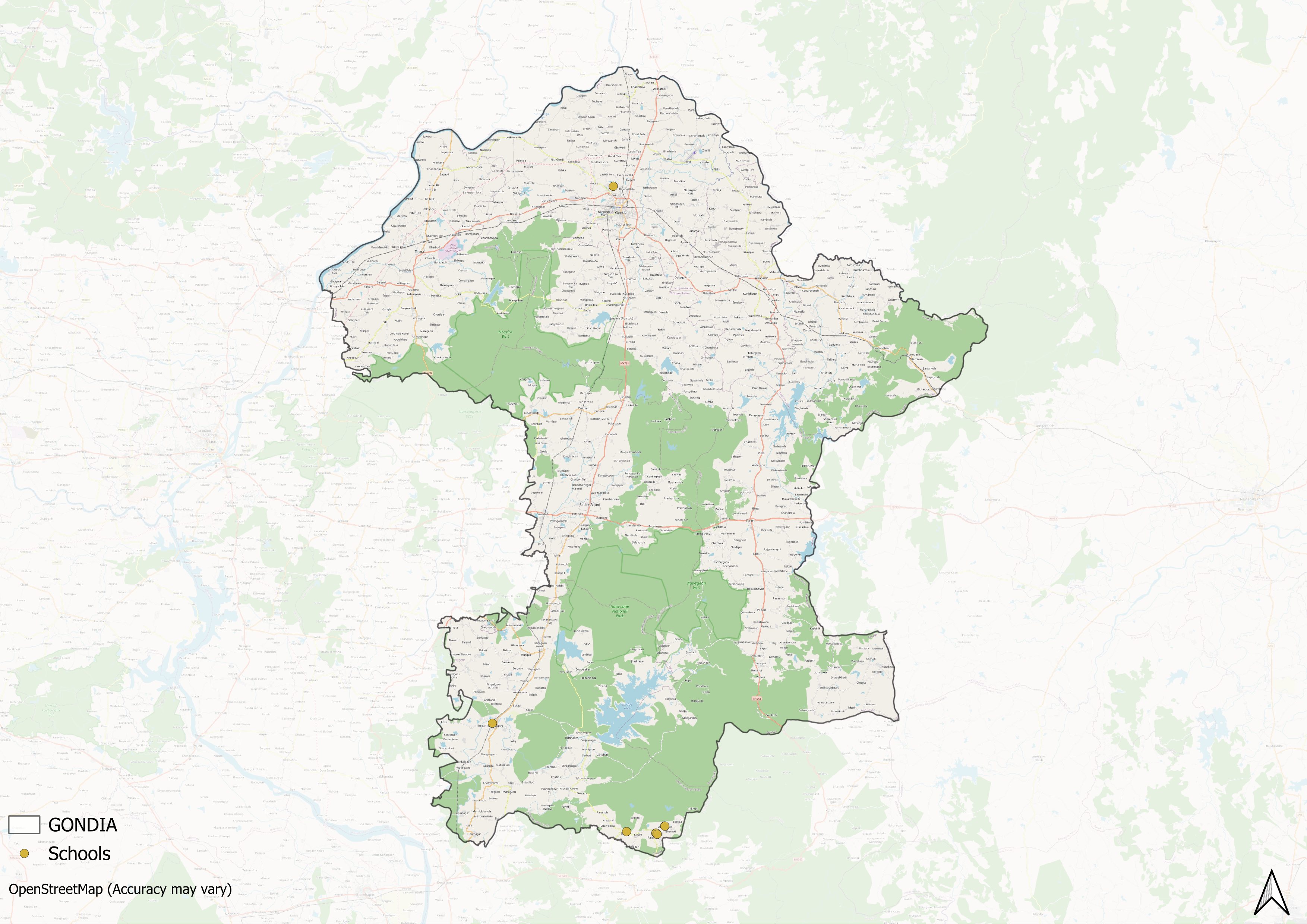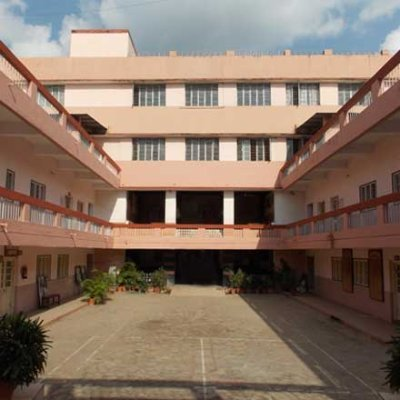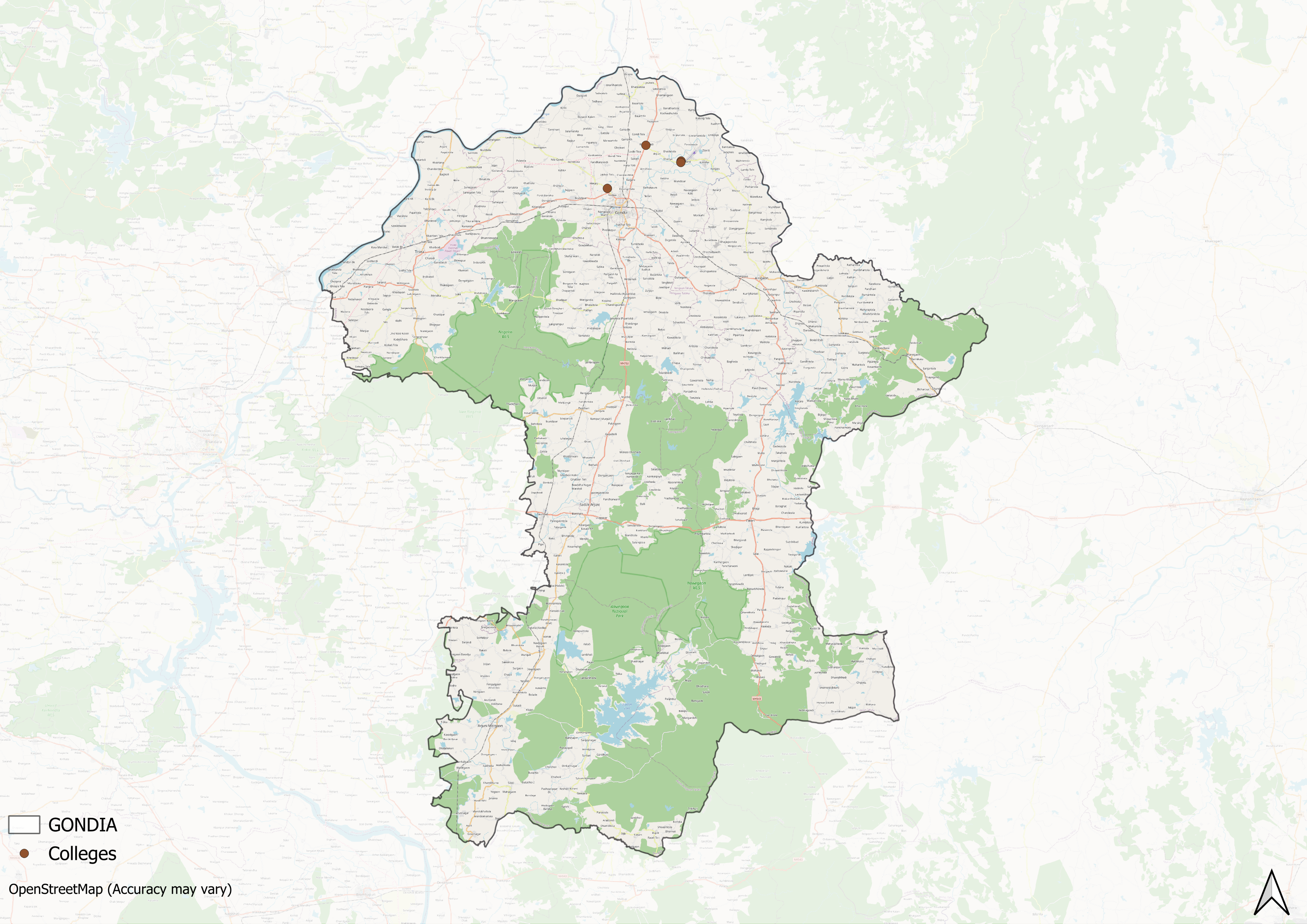Contents
- Early History
- Colonial History
- Post-Independence Era and Contemporary Educational Infrastructure
- Primary & Secondary Education
- Institutions of Higher Learning
- Natwarlal Maniklal Dalal College
- S. S. Girls’ College in Gondia
- Government Medical College
- Manoharbhai Patel College of Agriculture (MBPCA)
- Prominent Figures & Organizations
- Chaturbhuj Sharma
- Manoharbhai Patel
- NGOs and Community-Based Education Efforts
- Gudhi Padva- Shala Pravesh Vadhava
- Graphs
- Enrollment and Dropout Rate
- A. Student Enrollment Numbers
- B. Student Enrollment (Class-Wise)
- C. Student Enrollment (Gender-Wise)
- D. Student Enrollment (By School Management Type)
- E. Drop Out Rate (By Schooling Level)
- F. Drop Out Rate (By Gender)
- Schools
- A. No. of Schools
- B. No. of Schools (Filtered by Gender Mix)
- C. No. of Schools (By School Management Type)
- Teachers
- A. No. of Teachers
- B. No. of Teachers (By School Management Type)
- C. No. of Teachers (Male vs Female)
- D. Education Level of Teachers
- Sources
GONDIA
Education
Last updated on 28 July 2025. Help us improve the information on this page by clicking on suggest edits or writing to us.
The educational framework of Gondia aligns with the broader structure of the Indian education system, encompassing pre-primary, primary, secondary, and higher education. By the 19th century, the introduction of the Western education framework in the district changed its educational landscape. British administrators and missionaries became actively involved in shaping education in the region.
Still, even as colonial influences grew, the early 20th century saw a wave of local initiatives; its existence indicated an increasing public awareness regarding the importance of education. Local communities took charge of education, a movement that carried into the post-independence era, shaping the district’s educational landscape in lasting ways.
Early History
The documented history of education in Gondia can be traced back to the Post-Independence times. Prior to this era, information about educational centers in the district was sparse due to limited historical records. However, this does not imply that formal education was completely absent in the district. It is possible that, like many places across Maharashtra, some systems of education did exist in the district in earlier times.
Colonial History
Little is known about Gondia's educational history during the colonial period, as it was part of the Bhandara district. Most educational developments began to take shape after India gained independence, marking a significant turning point in the region's approach to learning and access to education.
Post-Independence Era and Contemporary Educational Infrastructure
Following India's independence, the education system in Gondia underwent major transformations. The introduction of structured education levels—pre-primary, primary, secondary, and higher education and the implementation of National Education Policies heavily shaped the educational landscape of the district. Over the years, the education sector developed with contributions from both government-funded institutions and private organizations. Additionally, Educational boards were also introduced, each offering distinct curricula and standards, providing students with more choices.
Primary & Secondary Education
During the colonial period, both public and private efforts in education primarily focused on primary and secondary schooling, as indicated by data from district gazetteers across Maharashtra. Higher education remained underdeveloped in most districts, including Gondia, with gradual improvements over time. While basic infrastructure for primary and secondary education existed, its expansion was closely tied to increasing enrollment and greater involvement of local figures.

Today, this expansion is evident in the widespread presence of schools across various wards of Gondia, with available data reflecting the steady growth of educational institutions in both urban and rural parts of the district.
Institutions of Higher Learning
Perhaps one of the most notable changes in Gondia’s educational landscape is tied to the establishment of higher education institutions. While primary and secondary schooling expanded steadily, opportunities for advanced education remained limited for much of the district’s history. Over time, local leaders and organizations played a crucial role in addressing this gap, leading to the creation of several colleges. As a result, many institutions in the district today are privately managed, semi-private, or autonomous.
Natwarlal Maniklal Dalal College
Established in 1958, Natwarlal Maniklal Dalal College (N.M.D. College) was among the first institutions of higher education in Gondia. Its foundation was laid by Shri Manoharbhai Patel, who also founded the Gondia Education Society (GES). The college offers undergraduate and postgraduate programs in arts, commerce, law, and management, along with distance education courses through Yashwantrao Chavan Maharashtra Open University.
S. S. Girls’ College in Gondia
S. S. Girls’ College was established in 1970 under the aegis of the Gondia Education Society and remains affiliated with Rashtrasant Tukadoji Maharaj Nagpur University. As the district’s first women’s college, it marked a significant step towards expanding educational access for women. The college offers programs at the junior, undergraduate, and postgraduate levels in subjects such as arts, home science, and geography.

Government Medical College
The Government Medical College in Gondia was established in 2015 under the Directorate of Medical Education and Research, Mumbai. It follows the curriculum guidelines set by the National Medical Commission and includes both theoretical and field-based training. Plans for a new campus on a 25-acre site are underway.
Manoharbhai Patel College of Agriculture (MBPCA)
The Manoharbhai Patel College of Agriculture (MBPCA), which began in 2009, focuses on the agricultural and research needs of eastern Maharashtra. Located amid 30 acres of farmland, the college also maintains over 100 acres of additional land for research purposes. It primarily serves students from rural and economically disadvantaged backgrounds and supports applied learning across agricultural disciplines.

In addition to these institutions, a number of centres for higher education operate throughout the district, which offer programmes across various disciplines. While the landscape of higher education has broadened significantly since independence, disparities in access, particularly along geographic lines, remain evident.
Prominent Figures & Organizations
Chaturbhuj Sharma
Chaturbhuj Sharma was a freedom fighter from Gondia who joined India’s independence movement at the age of 20. He was imprisoned multiple times under British rule, spending nearly ten years in jails such as Nagpur, Jabalpur, and Khandwa. While incarcerated in Jabalpur in 1930, he met Dr. Rajendra Prasad, an encounter that further shaped his political resolve.
After independence, Sharma served as an MLA from 1952 to 1957 and remained committed to social and educational development. In 1957, he founded the Sarada Public Library in Gondia, which became a valuable resource for students, especially those preparing for competitive examinations.
Manoharbhai Patel
Manoharbhai Patel was a prominent educationist and founder of the Gondia Education Society (GES), established in 1958. Although he had limited formal education himself, he recognised its transformative potential and worked to expand access in the region. Under his leadership, GES set up numerous institutions across Gondia and Bhandara districts. His legacy continues through institutions such as the Manoharbhai Patel Institute of Engineering & Technology.
NGOs and Community-Based Education Efforts
Education has been a key driver of social reform, particularly in addressing inequality and expanding access to learning. While formal institutions provide structured education, many communities continue to face barriers due to poverty, social stigma, or lack of resources. To address these challenges, various organizations in Gondia have focused on community-based education initiatives, with each working to tackle specific social challenges present in the district.
Gudhi Padva- Shala Pravesh Vadhava
To address declining enrollment in government schools, the campaign Gudhi Padva—Shala Pravesh Vadhava was launched in Gondia. Initiated by District Collector Dr. Vijay Suryavanshi and Education Officer Ulhas Narad, the program used the Gudhi Padva festival to promote first-standard admissions in Zilla Parishad schools. Festivities included decorated bullock cart processions and household visits, aiming to renew interest in local schooling options.
The impact of this initiative was remarkable. According to an NDTV article (2018), enrollment in the first standard surged from 3,700 in 2014-15 to an impressive 10,120 during the academic year 2015-16, showcasing a renewed trust in local schools. This success, in many ways, underscores the importance of community engagement when it comes to educational access and the potential of innovative campaigns to revitalize public education.
Graphs
Enrollment and Dropout Rate
Schools
Teachers
Sources
Government of India. “Gondia District Repository.” Azadi Ka Amrit Mahotsav. Accessed March 18, 2025.https://cmsadmin.amritmahotsav.nic.in/distri…
Just MBBS. “Government Medical College, Gondia.” Just MBBS. Accessed March 18, 2025.https://www.justmbbs.com/mbbs-college/india/…
Maharashtra State Gazetteers. 1974. Gondia District. Directorate of Government Printing, Stationary & Publications, Government of Maharashtra, Mumbai.
Mahatma Gandhi Institute of Bio-Technology and Pharmacy. “Manoharbhai Patel.” MIBP Gondia. Accessed March 18, 2025.https://www.mibpgondia.org/edu-team/manoharb…
Manoharbhai Patel College of Agriculture. “Historical Brief.” MPC Agri. Accessed March 18, 2025.https://mpcagri.com/historical-brief/
Manoharbhai Patel College of Agriculture. “The Highlights & Activities.” MPC Agri. Accessed March 18, 2025.https://mpcagri.com/photos_gallery/the-highl…
Natwarlal Maniklal Dalal College of Arts, Commerce, Law and Management (NMDCACLM). “College Profile.” Colleges18. Accessed March 18, 2025.https://www.colleges18.com/college/10516-nat…
Press Trust India. 2018. “Gudi Padwa 2018: School Enrollment in Maharashtra to Attract More Children.” NDTV. Accessed March 18, 2025.https://www.ndtv.com/india-news/gudi-padwa-2…
Shri Sankaracharya Gurukul College. “Vision and Mission.” SSGC Gondia. Accessed March 18, 2025.https://ssgcgondia.org/vision-and-mission/
Last updated on 28 July 2025. Help us improve the information on this page by clicking on suggest edits or writing to us.